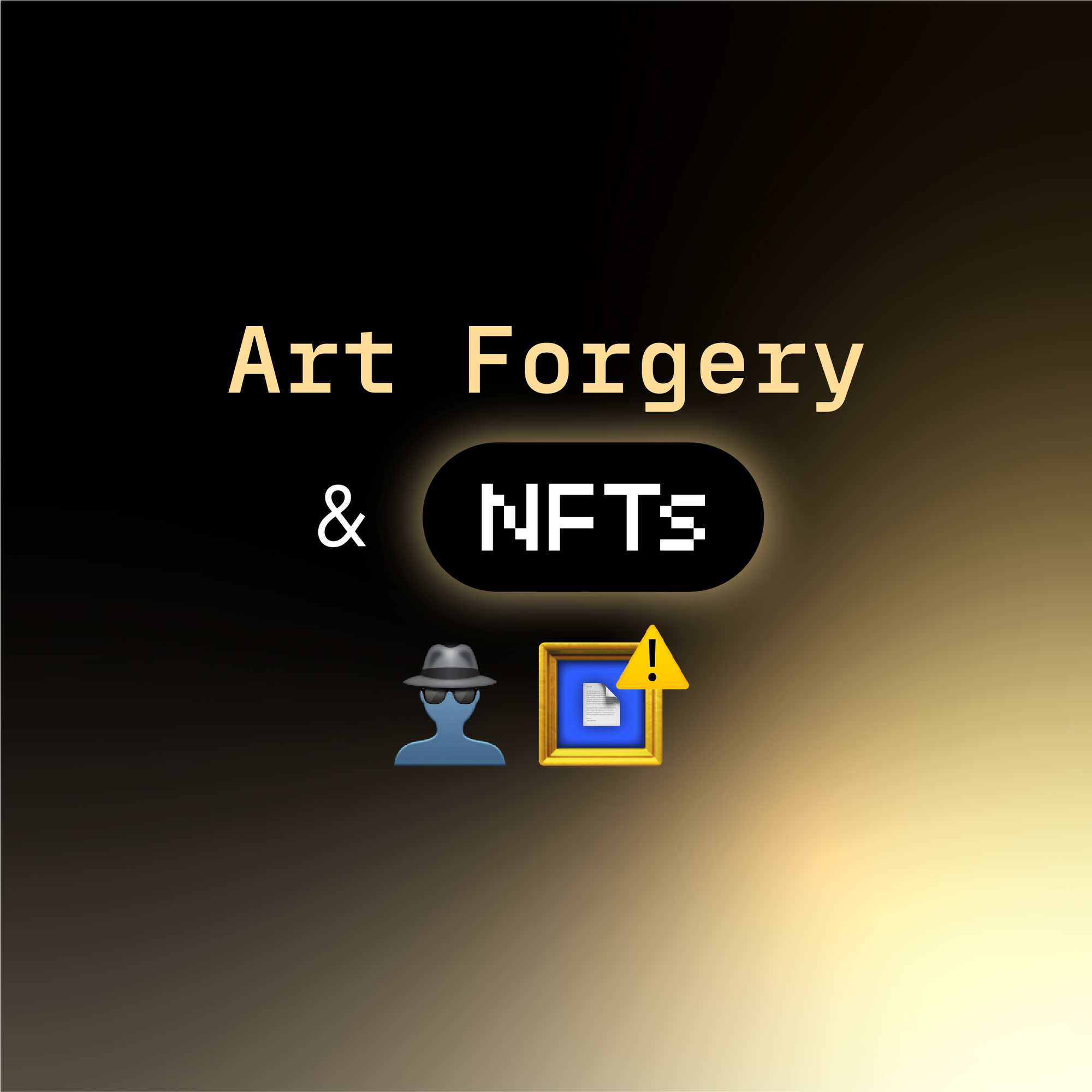How the NFT Marketplace Can Solve the Problem of Counterfeiting and Art Forgeries
By Terrain.art | Sep 1 2021 · 5 min read
Thanks to the new blockchain technology, the longstanding problem of counterfeiting in the world of art may well be a thing of the past.
It might seem like a page straight out of a Hercule Poirot or a Sherlock Holmes novel, but art forgery is a common problem that dates back to antiquity. Art forgery encompasses a large variety of malpractices used to sell counterfeit artworks to earn money. From reproducing meticulous replicas of works of master artists to falsely representing the date, place of origin, and authorship of an artwork, forgeries can take an array of forms.
Thankfully with the emergence of blockchain technology and the NFT marketplace, art forgeries and counterfeiting may soon be a thing of the past.
Art, Authorship and Counterfeiting
History is filled with anecdotes of crimes involving masterpieces of European art. The idea of forgery or counterfeiting is invariably tied with the notion of intellectual property rights. In ancient times, the famous Greek sculpture Spear Bearer, attributed to Polyclitus, was widely copied and sold. By the medieval age, the notion of intellectual property rights began to take root in the minds of the artists and sculptors of that age. Legend has it that when Michelangelo learnt that someone else was receiving credit for Pieta, he added his signature across the centre of the sculpture.
In the 18th and 19th centuries, with the rise of the new bourgeois class, the art market flourished. Art galleries, museums and auction houses started dotting the art landscape. The study of fine arts got a proper disciplinary form. At the same time, forgeries and counterfeiting of artworks of great masters flourished.
Over the years, many attempts have been made to weed out such malpractices from the discipline. These include gaining more knowledge about the oeuvre of works of renowned artists that can help art experts to distinguish fake works from real ones. The practice of selling art online has made the world of art even more vulnerable to forgeries. However, new technologies, such as blockchain and assigning digital tokens, are slowly changing the game.
Issues with Modern-Day Detection of Forgeries
Despite several advances, art forgery is very much a reality and continues to this day. There are several factors that make the detection of forgery particularly difficult in the world of art. While scientific, forensic methods exist to detect the age of historical artworks, the same cannot be said about works of contemporary artists. Moreover, professional forgers of historical art can even override sophisticated modern forensic methods by using old materials and mimicking long-forgotten artistic methods.
How are NFTs Fighting Art Forgeries
Thanks to blockchain technology and the NFT marketplace, the menace of counterfeiting may soon be over. Artists and online art sellers are now creating their own NFTs to secure the authenticity of artworks. To understand how this technology and NFTs can help in fighting counterfeiting in art, we must understand how this technology works. Here are some important pointers:
Put simply, a blockchain is an open, distributed ledger that records transactions in a secure and immutable way. This means that anyone can track the history of an item from its initial creation to its current owner. Blockchain explorers like Etherscan allow you to explore and search the Ethereum blockchain for transactions addresses, tokens, prices, and other activities taking place on the Ethereum platform.
Since each item is assigned an NFT or a non-fungible token, a person can simply track the token to verify the item’s authenticity.
Another way blockchain can be used to verify the authenticity of artwork is through ENS or Ethereum Name Service. Tech-savvy artists who know how to create an NFT can easily sign up on the network to receive a short readable address to easily transfer NFTs or cryptos. As ENS is a distributed, open, and extensible naming system based on the Ethereum blockchain, artists can link public information such as social media profiles, avatars, and email addresses to further prove their identity on the blockchain.
Each item that is traded in the NFT marketplace is assigned a unique digital token, which acts as a record of authenticity. An NFT record can never be falsified because the digital token that is assigned to an artwork is non-fungible in nature. Fraudulent sellers can never pass on other artists’ work as their own, as there’s no NFT record proving their ownership. Many online sellers now offer NFTs attached to an original piece of work to prove authenticity and provenance record.
Conclusion
Although counterfeiting is not yet a thing of the past win the art world, the emergence of blockchain technology and NFTs may well prove to be the last nail in the coffin of fraudulence and counterfeiting.
Terrain.art, a leading blockchain-powered, open platform, is a reliable environment for artists and art collectors to immerse themselves in accessible art without worrying about authenticity and fraudulence. All artworks that you buy through Terrain.art are assigned a unique digital token that makes counterfeiting impossible.

